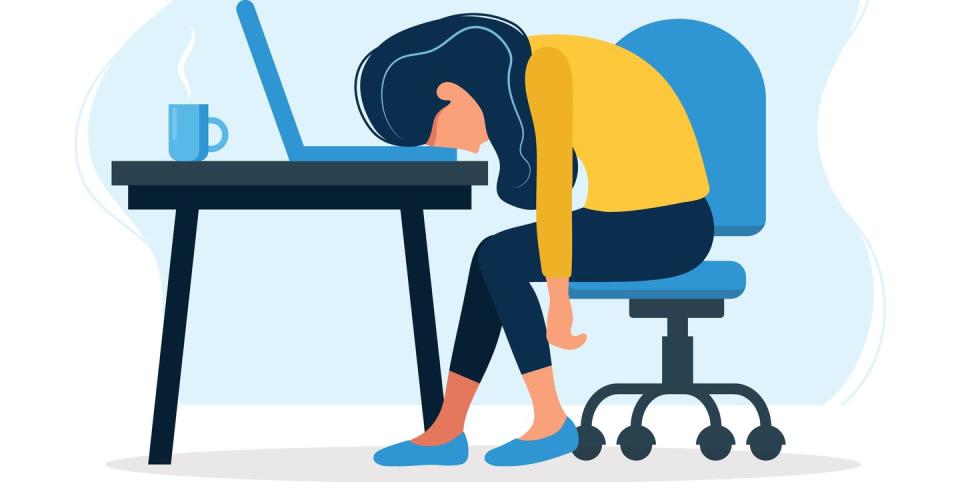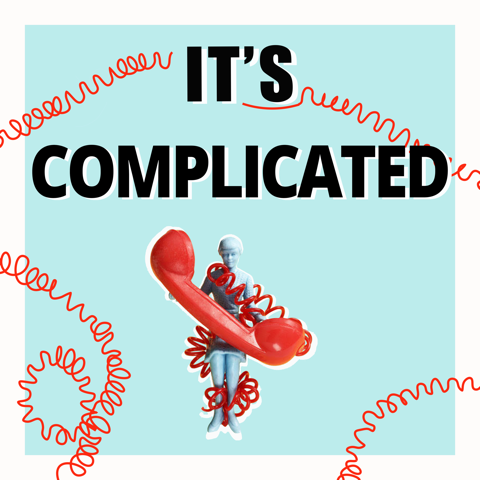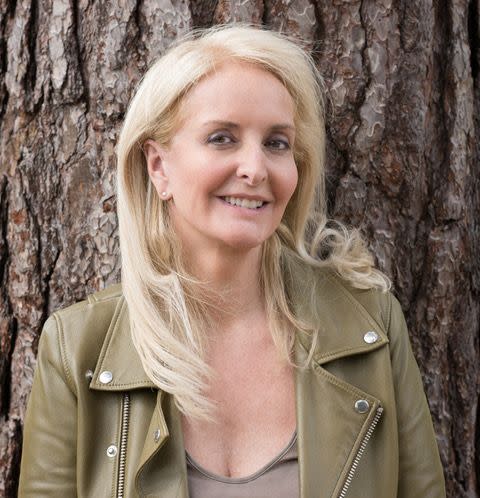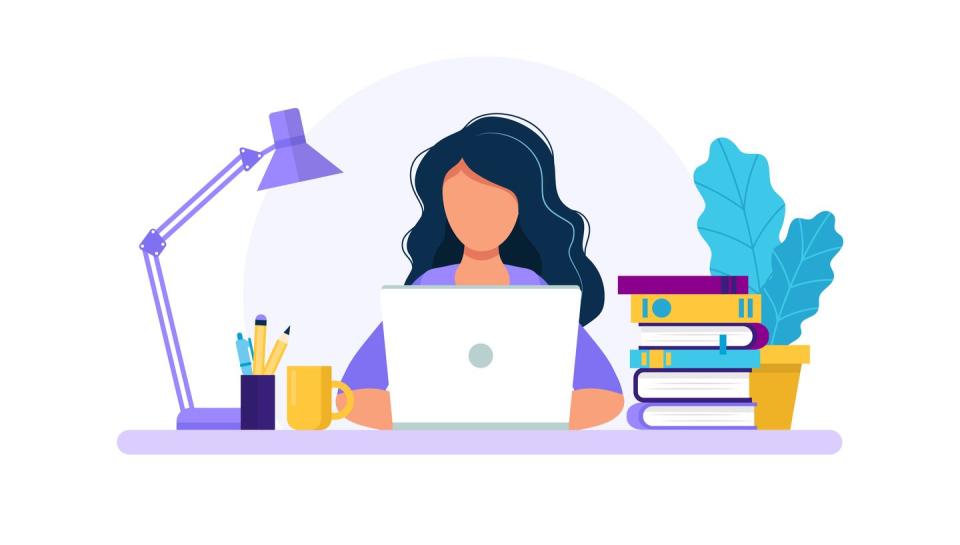How to find digital balance, according to an expert

Do you feel like every hour of every day is spent staring at a screen? Us, too.
With many people working home since March, it can be tough to strike the balance between work and play. Particularly as very often, ‘play’ means endless Zoom calls, quizzes or online escape rooms.
Let’s be honest here, how many times in the past four months have you had a sore neck, stiff shoulders, tired eyes or a headache?
A contributor to these aches and pains, in a lot of cases, is endless screen time. We need them for our day jobs, but when work is from home, finding digital balance can be a difficult tightrope to walk.
Enter digital wellbeing expert, Tanya Goodin. Tanya has spent her entire career focused on the interaction between people and technology.
As our lives have become dominated by screens, Tanya’s focus now is how to ensure we continue to use the digital world for good. She is the founder of digital wellbeing movement Time To Log Off and the author of two books on our relationship with screens: OFF and Stop Staring At Screens.
Tanya is an experienced public speaker on our complicated relationship with tech. Since 2012, she has been delivering workshops in workplaces, schools and at public events, on tech-life balance & a healthy use of screens.
She has also launched a successful podcast - 'It's Complicated: untangling the relationship with our phones', which has been ranked as one of Apple’s Top 50 Podcasts.

We asked Tanya how we can find digital wellbeing in today’s working from home world. Here’s what she said…

How would you define ‘digital balance’?
“We achieve digital balance when we use the digital world for all its many helpful uses, without falling prey to some of the harmful side effects. A good analogy is food; what do you need to think about when you’re planning a heathy diet? Are you getting enough nutrients, vitamins and minerals, are you avoiding junk food?
For your digital consumption, your nutrients are the activities that help you achieve your personal goals, whatever they may be (work, fitness, education etc). Your digital junk food is all that mindless screen scrolling, falling down internet rabbit holes for far longer than you intended, that wastes hours of your day.”
Why is digital wellbeing so important?
“We now spend over eight hours a day on screens. Thinking about our wellbeing in isolation of the time we spend in the digital world no longer makes any sense. Pandemic aside, preserving our digital wellbeing is one of the most important aspects of keeping healthy right now.”
Why do you think digital balance has become harder to achieve in today’s post-lockdown world?
“During lockdown, we all relied heavily on our screens to keep us connected; an incredibly helpful use of the digital world. Weren’t we all very thankful that we could video call friends and family? The danger now is that as lockdown has eased, we’ve become overly dependent on screen-based communication and, dare I say, a little addicted.
For many people, the prospect of stepping into the physical world has become tinged with fear. We need to be careful we don’t keep on substituting screens for real-world connection.”
How do we know when we’re not achieving digital balance? What are the warning signs?
“There have been a lot of complaints about poor sleep during the pandemic. Some of that may be due to increased levels of anxiety, but undoubtedly some of that can be laid at the door of our night-time screen scrolling habits.
Using screens late into the night when we should be sleeping is a big warning sign. Being unable to walk even just from one room to another in your own home without having your smartphone in your hand, is another. If your phone has become an adult comfort blanket and you panic if it’s not with you at all times, you need to take a good look at your habits. Practising untethering - leaving your phone in one location while you go about your day - is a good way to break this habit.
Mental health issues from non-stop social media posting and checking is another warning sign. If you notice your mood is lower after spending time on social media, then you need to cut down.
Often the first 30 minutes is fun, but then, as you start doom-scrolling (checking for bad news stories compulsively) or comparing your real life to someone else’s highlight reel, the experience morphs into something altogether less pleasant. Learn how to monitor your mood as you scroll and log off when it starts to dip.”

When working from home, what are the key ways in which we can find digital balance during the day?
“Three things will help you in the working from home challenge: taking regular screen-breaks during the day, setting firm boundaries between work and play and learning how to relax and recharge off screens.
When working, aim for screen breaks roughly every two hours. A 15-minute break to rest your eyes for every two hours of screen time is the rule. If possible, during your break, direct your eyes at something green and living. If you don’t have a garden, take a quick 5-minute walk around the block.
Set boundaries between how you use your devices when you’re ‘at work’ and when you’re not. Designate your smartphone as your leisure device, put it firmly out of sight when you’re working on your laptop. Removing social media from your work device or using an easily downloadable website blocker, will keep you on track during the day.
StayFocusd is an extension for Chrome that helps you stay focused by restricting the amount of time you can spend on less productive websites. Once the time you have specified has been used up, the sites you have blocked is inaccessible for the rest of the day. Other apps exist which do the same thing on your smartphone.
Prioritising relaxing off-screens is one of our biggest challenges. If we’re going to work entirely on screens, we can’t also be using them to relax and unwind. Eight hours on email and Zoom, followed by four hours on Netflix isn’t going to make us feel great. Analogue activities that keep both hands busy and require concentration and focus are the perfect antidote to all that screen time.
Cooking, sewing, jigsaws, gardening, even reading a book, these are all things that will help you practice mindfulness and properly unwind. Being physically active, going on a run, even a walk, should also be in your plans for screen-free recharging time.”
How can we successfully transition between the working day and our evening leisure time?
“We need to give ourselves simple visual cues and boundaries when we’re transitioning from work to leisure within the same four walls. Put your laptop away so it’s not visible, move into a different physical location in your home at 5.30pm, only use a designated ‘work’ chair during the working day and don’t use it in the evenings.
Snap on a different smartphone case during the week (a muted or plain one) to the one you use at the weekend (brightly coloured) to lay down another visual marker between work and play.
Configure website blockers on your laptop during the workday, make good use of autoresponders at weekends and log off and shutdown email at 6pm. All these are worth trying out to see what works for you”
What is your advice for navigating our social life now?
“We all jumped on Zoom because we thought video calls would make us feel more connected, but there’s plenty of evidence showing that too many video calls make us feel frazzled. They take huge reserves of mental effort to concentrate on the often very poor audio and to try and decipher fuzzy non-verbal communication.
Rediscover audio calls as a much more effective way to keep your bonds intact. Studies show that it’s the variety and richness of the human voice that builds connection, rather than the moving image. Screens and social media are good for maintaining casual connections, but for those closest to us we need to do more.
Now that we can go out, if you can, meet up for a socially distanced chat in the park or a walk with a friend. Don’t fall back into making screens the default way you connect with your loved ones. They deserve more in these anxious times, and so do you. The quality of our closest relationships are one of the key determinants of how long and healthily we live, make the effort to strengthen them, away from screens.”
For more nuggets of advice from Tanya on all things digital, check out her podcast HERE.
In need of some positivity? Sign up to the Good Housekeeping newsletter to receive inspiring content straight to your inbox, from delicious recipe ideas and expert cleaning advice to uplifting lifestyle news, and fashion and beauty tips.

Enjoy Good Housekeeping delivered directly to your door every month! Subscribe to Good Housekeeping magazine and get 6 issues for just £6.
You Might Also Like

